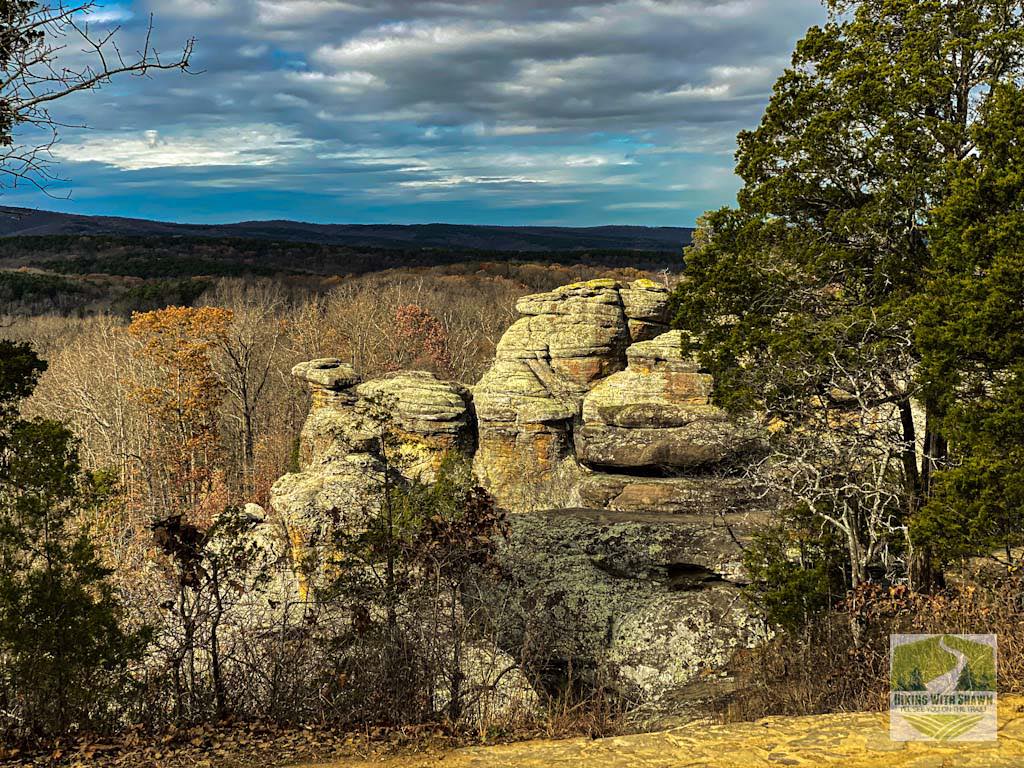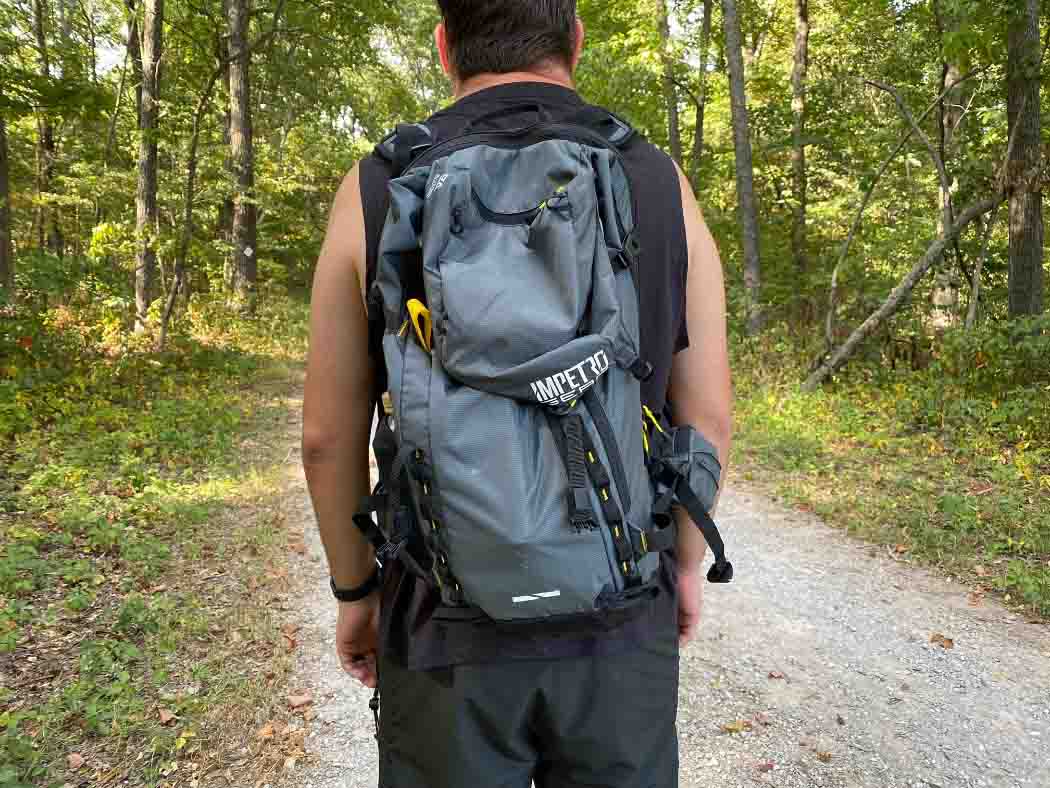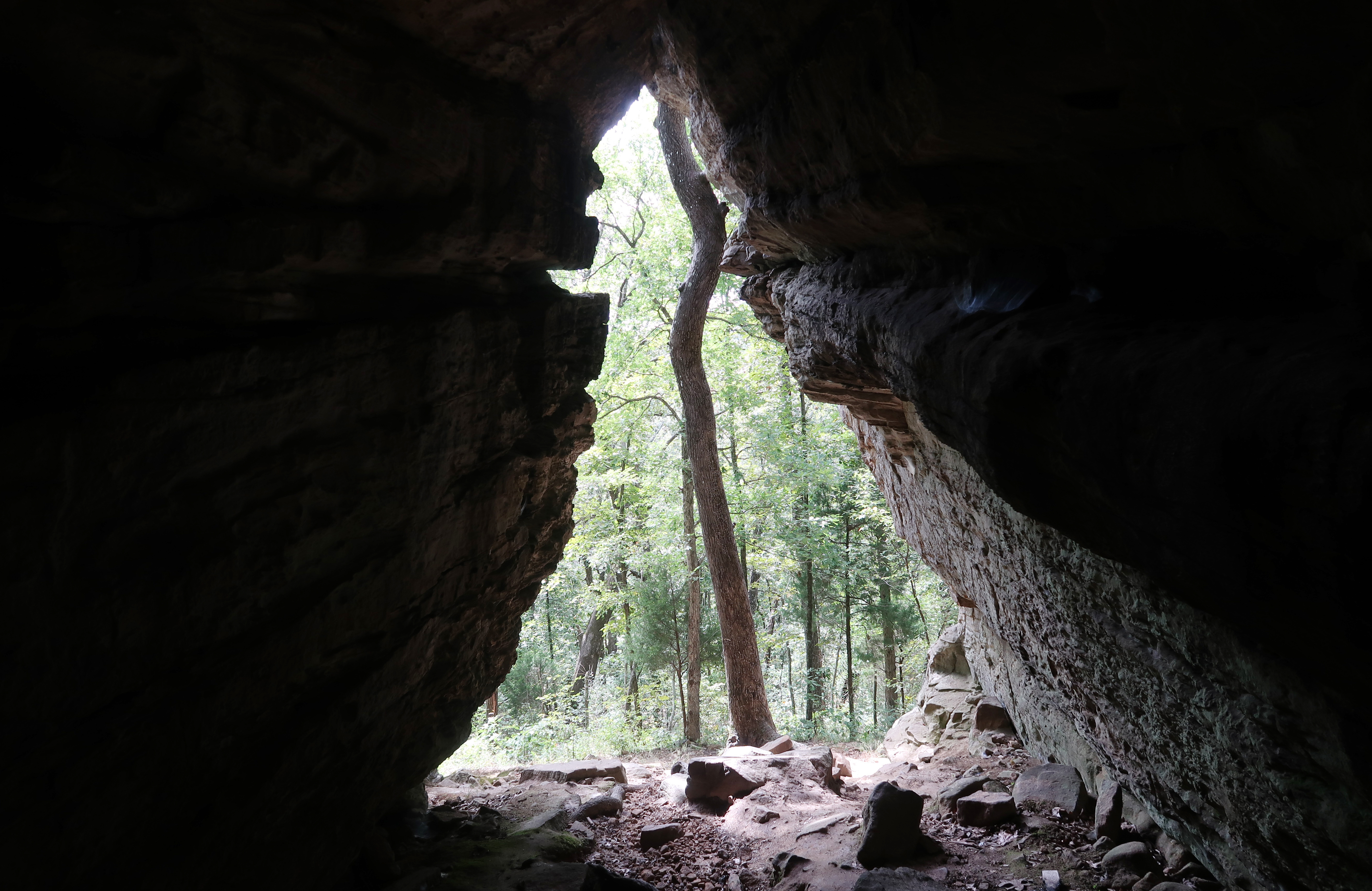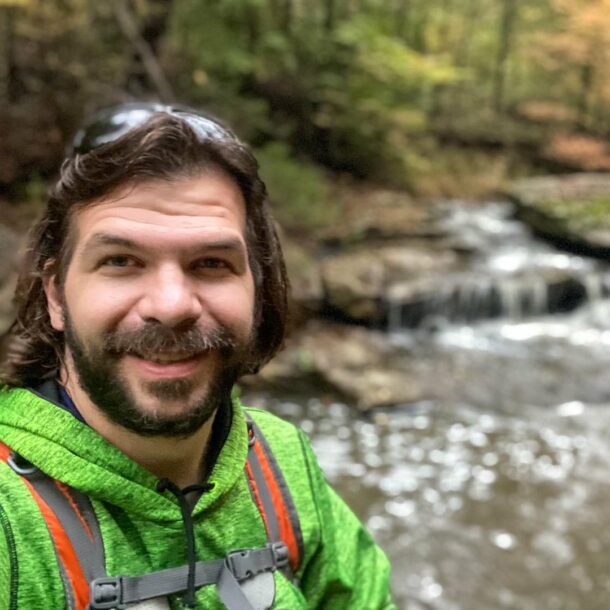How Hard is it to Hike Garden of the Gods in the Shawnee National Forest?
Is it hard to hike Garden of the Gods in the Shawnee National Forest?
The short answer is YES and NO. The long answer is the information below, which I have collected in an effort to show any type of user who wants to visit the Garden of the Gods what they should expect it to be like. There is literally something for everyone who wants to hike the Garden of the Gods in the Shawnee National Forest.
If you’d like to learn more about this, please continue reading my guide below.
Why Hike Garden of the Gods in the Shawnee National Forest?
Garden of the Gods is a staple of Southern Illinois and Illinois as a whole.
It’s the most visited area in the Shawnee National Forest and has even been featured on the back of a US quarter. It’s a Recreation Area, Natural Area, and Wilderness Area managed by the Shawnee National Forest. There are famous rock formations, hiking trails, horseback riding trails, and even a campground at Garden of the Gods.
You can hike Garden of the Gods all year long.
The trails are open to hikers all year long, and each season brings a different beauty. If you want to see amazing fall colors, for example, you’ll definitely want to visit the Garden of the Gods. The wilderness area does close for horseback riding during the wetter seasons, though, to protect the integrity of the trail from intensive damage.
Garden of the Gods is very easy to get to.
Check out this Google Maps Link to get to the main parking area of Garden of the Gods. The roads are paved and well maintained, but a few trailheads are gravel and may not be as cleared during wintry conditions. For the most part, your onboard vehicle GPS system should work all the way to Garden of the Gods.
If you want to see absolute beauty, amazing views, and rock formations, then you definitely need to come hike Garden of the Gods in the Shawnee National Forest.
Hiking Trails at Garden of the Gods
There are numerous trails in Garden of the Gods, but the most scenic and popular one is the Observation Trail.
The Observation Trail is a half-mile loop trail that leads to famous rock formations like Camel Rock and Devil’s Smokestack. It is rated easy and has little elevation gain, making it very easy to follow. While this trail would be appropriate for families, please ensure that you watch children and pets, as there are many fall hazards present.
Indian Point is a great trail for those looking to start overnight backpacking.
Indian Point is a popular longer backpacking trail in the Garden of the Gods Wilderness. It offers stunning views, natural shelters, and rock formations. The trail is a moderate 1.7-mile lollipop loop. You can camp along the trail and leave your vehicle in the gravel parking lot overnight.
There is a section of the 160-mile River to River Trail that runs through the Garden of the Gods.
When you hike the Garden of the Gods section of the River to River Trail, you’ll see some of the most beautiful bluff lines, scenic overlooks, and even a popular natural arch along your route. The trail is a 6+ mile point-to-point hike that is rated moderate with some challenging elevation gain. You’ll also share this section of the trail with horseback riders.
There are even more miles of trails within the Garden of the Gods Wilderness to choose from, including the Big H hike.
Recommended Gear to Hike Garden of the Gods
It’s important that you bring the right gear with you when you hike Garden of the Gods in order to safely enjoy the area.
The first thing you want to have is a good backpack. Your backpack should be rated for hiking, and you need to make sure you get the right size for your height and requirements. You should also make sure you buy the right capacity based on your gear needs.
There are 10 main essentials that you should be taking with you on your hiking trips.
- Navigation (GPS, phone app, PLB, maps, and a compass)
- Lights (headlamp and flashlight with extra batteries)
- Skin Protection (sunblock, chapstick, and insect repellent)
- First Aid Kit
- Tools (Knife, folding saw, and gear repair kit)
- Fire (Lighter, waterproof matches, and fire-starting kit)
- Emergency Shelter (Lightweight Bivy, Tarp System, or Hammock)
- Extra Food (enough to last a few days if rationed)
- Extra Water (enough to last a few days if rationed)
- Extra Clothing (For layering up or repelling rain)
You also need to wear durable footwear rated for hiking, such as boots, shoes, or trail runners. Take note that you might have to cross creeks when it’s wet. Make sure your footwear is broken in before using it on longer hikes; otherwise, you’ll be prone to blisters.
Wear comfortable clothing when you hike Garden of the Gods in the Shawnee National Forest. You can wear hiking-specific or fitness clothing as long as it breathes. Stay away from cotton, denim, leather, and other breathable materials.
Getting your gear in order is important if you want to hike Garden of the Gods comfortably and safely in the Shawnee National Forest.
Important Safety Tips for Garden of the Gods
Once you understand the important safety tips below, it becomes very possible to safely hike Garden of the Gods in the Shawnee National Forest.
Falls are the biggest cause of injury and death at Garden of the Gods. Avoid falling by putting safety first and watching your step. You should especially watch and control your children and pets when visiting this area.
Poison ivy does occur in this area, but there are plenty of ways to avoid it.
Poison ivy does occur in this area. You can avoid coming in contact with it by staying on the trail. Be sure to wash down after hiking to get any poison ivy oils off your body, gear, pets, and clothing.
Venomous snakes are in this area, but most people don’t even come into contact with them.
Venomous snakes occur and are protected in this area. You might see copperhead and timber rattlesnakes. Watch your step and move around any snake to avoid a negative encounter.
Avoid biting insects no matter what time of the year it is.
Biting bugs such as mosquitoes and ticks occur in this area. To prevent bites, use DEET-based repellent (lemongrass alternative) and permethrin. After you are done hiking, check yourself, your children, and any pets for ticks.
Off-trail hiking will increase your chance of encountering a hazard in this area.
Much of the Shawnee National Forest was old farms and ghost towns before it became a National Forest. Mainly off-trail, you occasionally find an open well, which could be hazardous if you fall into one. Please stay on the designated trail to avoid these hazards.
The Shawnee National Forest is bigger than you think, and you could get lost if you’re not careful.
It is easy to get lost in Garden of the Gods Wilderness if you’re not experienced in land navigation. When visiting the area, you should use an app you can use offline or a map and compass. Make sure you tell someone where you are going first and try not to hike Garden of the Gods alone.
Hikers are not the only ones who use this area, so please make sure you share the trail.
Horseback riders also use this area throughout the year. If you encounter a horseback rider while hiking, please talk to the rider in a calm voice and safely yield to them. This shows the horse you are not a threat and provides a safe passage while you and the rider share the trail.
Your phone signal might not always work in this area.
If you get hurt or lost, you might not have a signal to call for help. Make sure you tell someone exactly where you’re going before you go, and consider bringing a Personal Locator Beacon with you. Emergency services in the area are volunteer, and it could take a while before they reach you. In most cases, a helicopter will be used to transport you to the hospital (helicopter insurance is cheap)!
The biggest piece of safety advice I can give you is to simply use common sense.
Final Thoughts
Thanks for reading my article about hiking the Garden of the Gods in the Shawnee National Forest. As you can see, some parts are very easy to hike, while others could be difficult for some people. Use the tips above, and you should be able to enjoy your experience visiting this awesome area.
If you’d like to support me in writing this article, consider Buying Me a Pizza. You can also support me by joining my Patreon Page.
If you like discussing hiking and backpacking all over the world, consider joining my free, ad-free hiking forum.
Subscribe to my free newsletter for more Shawnee National Forest tips, resources, and upcoming local events.
And until next time, I’ll see you on the trail!
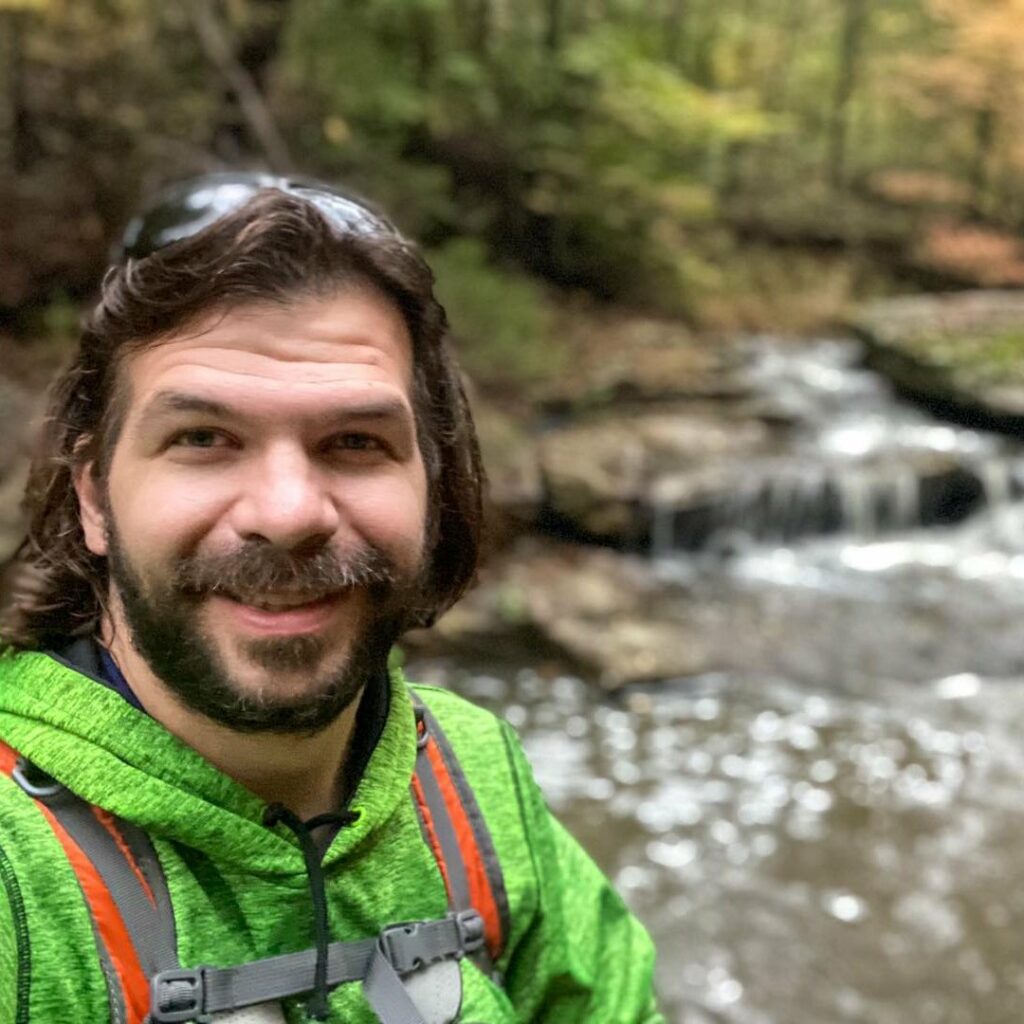
Shawn Gossman
Founder, Hiking with Shawn
Howdy folks! My name is Shawn Gossman and I founded Hiking with Shawn. I’m an avid hiker, cyclist and outdoorsman here in the Shawnee National Forest. I was born and raised in Southern Illinois and never want to leave. Click here to learn more about Shawn Gossman

